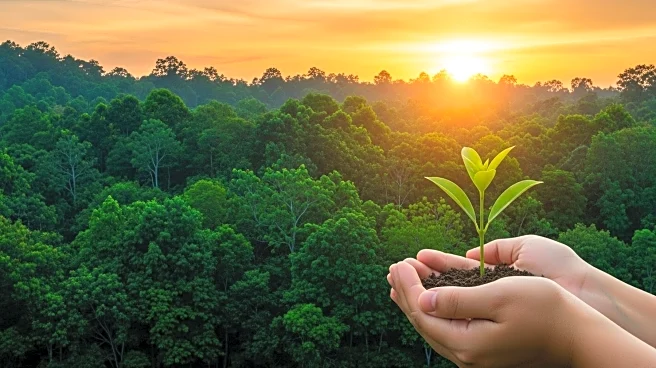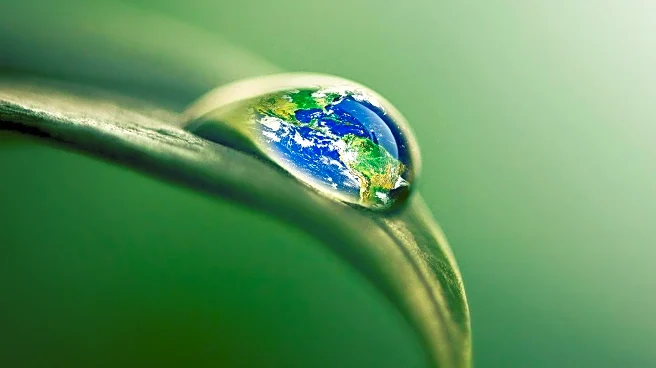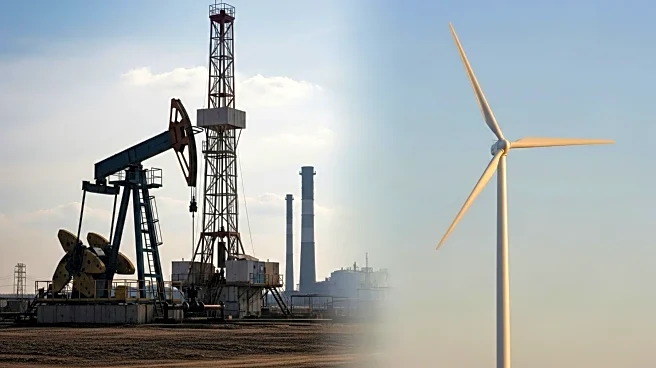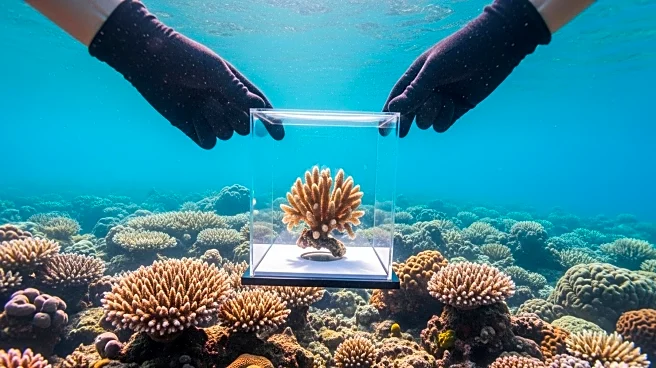What's Happening?
Cambodia's coastal provinces are at a critical juncture, with the ocean economy valued at approximately $2.4 billion annually, representing 16% of the nation's GDP. However, unchecked development has degraded essential ecosystems, prompting calls for a shift towards a blue economy. This approach emphasizes sustainable growth by leveraging ocean resources such as fisheries, aquaculture, marine renewable energy, and ecotourism. Koh Kong, Kampot, and Kep provinces possess vital natural resources, including mangroves, seagrass meadows, and coral reefs, which are under threat from pollution and illegal activities. The article highlights the need for improved governance, community co-management, and innovative financing to protect these ecosystems and ensure equitable distribution of benefits.
Why It's Important?
The transition to a blue economy is crucial for Cambodia's long-term prosperity, as it offers a sustainable alternative to the rapid and poorly managed growth seen in areas like Sihanoukville. By protecting coastal ecosystems and investing in sustainable fisheries, carbon credits, ecotourism, and clean energy, Cambodia can generate jobs, improve biodiversity, and create new revenue streams. This strategy not only supports economic growth but also addresses environmental challenges, such as overfishing and habitat degradation. The success of this initiative depends on effective governance, transparency, and collaboration between the government, communities, NGOs, and the private sector.
What's Next?
Cambodia's government must prioritize the blue economy strategy by enforcing environmental laws, strengthening governance, and fostering partnerships with stakeholders. Coastal provinces can become hubs for clean energy through offshore wind and solar installations, providing electricity and creating skilled jobs. Community-led initiatives, such as reef monitoring and sustainable aquaculture, can help reduce poverty and migration. The sale of carbon credits can fund infrastructure, healthcare, and education, benefiting local communities. The future of Cambodia's coast hinges on choosing between repeating past mistakes or embracing the blue economy for lasting prosperity.
Beyond the Headlines
The blue economy offers significant climate benefits by restoring carbon-rich ecosystems like tidal marshes and mangroves, which store more carbon than terrestrial forests. Protecting these habitats not only enhances biodiversity but also provides resilience against climate change. The initiative also promotes ecotourism, offering alternative revenue sources for coastal communities. By prioritizing community-owned tourism and diversifying employment opportunities, Cambodia can ensure sustainable development and equitable growth.











